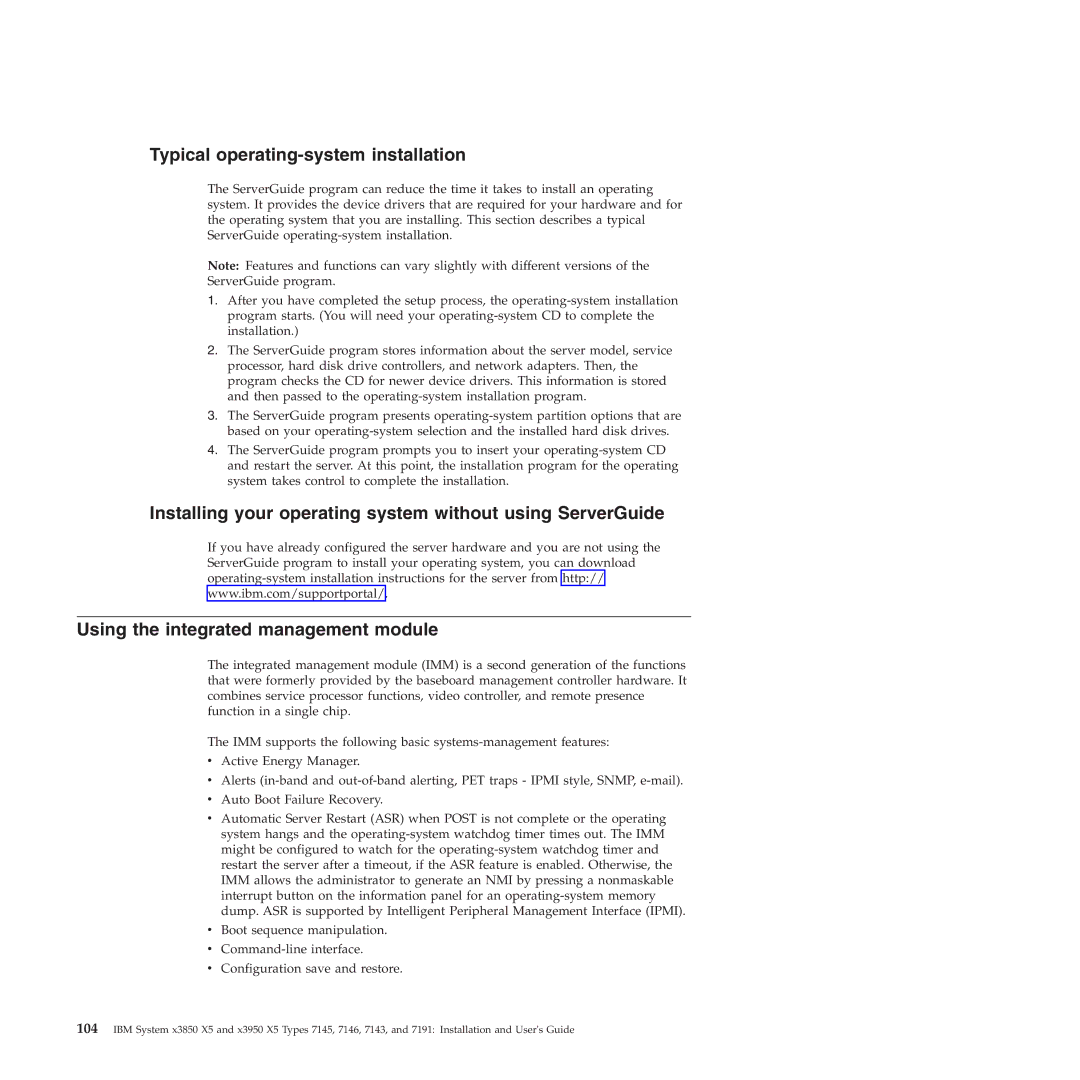Typical operating-system installation
The ServerGuide program can reduce the time it takes to install an operating system. It provides the device drivers that are required for your hardware and for the operating system that you are installing. This section describes a typical ServerGuide
Note: Features and functions can vary slightly with different versions of the
ServerGuide program.
1.After you have completed the setup process, the
2.The ServerGuide program stores information about the server model, service processor, hard disk drive controllers, and network adapters. Then, the program checks the CD for newer device drivers. This information is stored and then passed to the
3.The ServerGuide program presents
4.The ServerGuide program prompts you to insert your
Installing your operating system without using ServerGuide
If you have already configured the server hardware and you are not using the ServerGuide program to install your operating system, you can download
Using the integrated management module
The integrated management module (IMM) is a second generation of the functions that were formerly provided by the baseboard management controller hardware. It combines service processor functions, video controller, and remote presence function in a single chip.
The IMM supports the following basic
vActive Energy Manager.
vAlerts
vAuto Boot Failure Recovery.
vAutomatic Server Restart (ASR) when POST is not complete or the operating system hangs and the
vBoot sequence manipulation.
v
vConfiguration save and restore.
104IBM System x3850 X5 and x3950 X5 Types 7145, 7146, 7143, and 7191: Installation and User's Guide
